A fun way to find new cultivars for you to grow this season is to look by color. Maybe you want a specific color to match the new lick of paint on your house, or you just want a specific hole to be filled in your show bed. Let’s dive into the summer shade of peach flowers.
Either way, you can learn a lot about plants from these lists, regardless if you are a newcomer to the garden, or you are a steely eyed landscaper, there are always new plants and emerging cultivars to learn about.
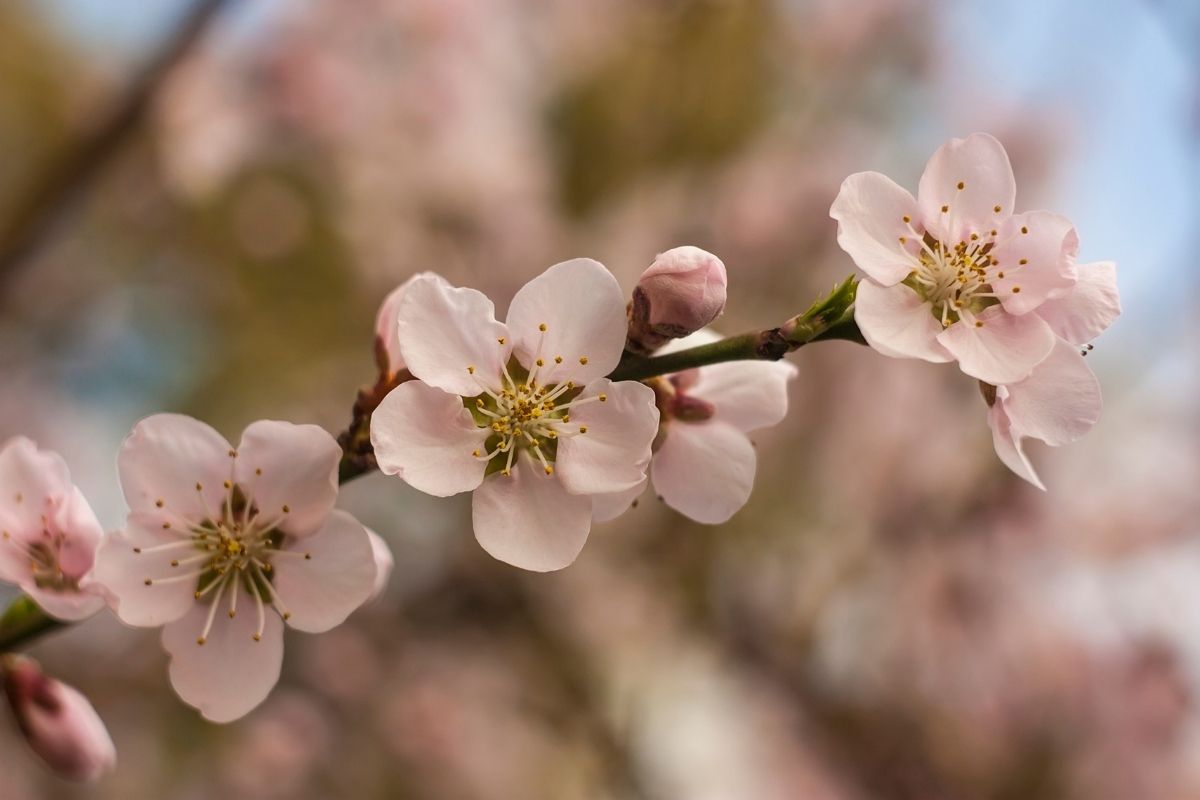
One color that is always hot at the plant nursery is the color peach.
Peach is a great color that not only reminds us of the summer glory of a freshly plucked peach, but it also reminds us of those nostalgic moments spent perched at the top of a hill with a loved one, watching the shades of the sky slowly bleed into your favorite shade of summer.
If it can occur in the sky, you bet it can occur naturally in a plant. Let’s explore plants, as well as the color peach, together!
1. Rosa ‘Peach Blossom’
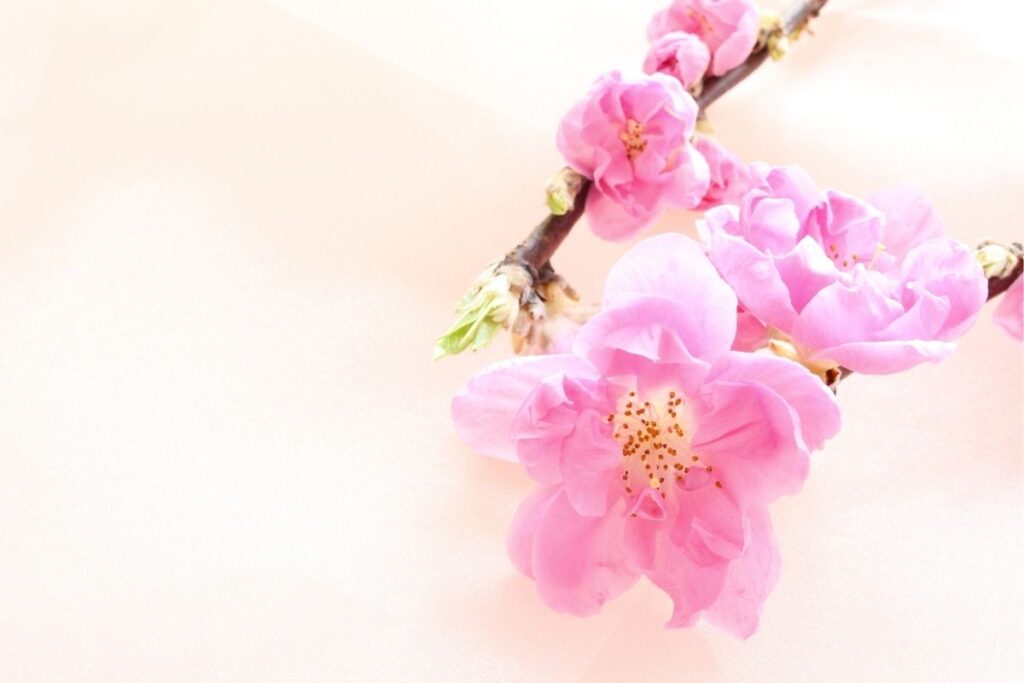
Let’s start simple with this adorable rose. Everyone loves a rose, anda peach rose is just a few shades shy of ‘I love you’, which is great for gardening rather than romance.
This cultivar is your classic English rose so it has the classic ruffled inflorescence and deciduous foliage.
The dark green stems with their dangerous thorns are the perfect comparison to the amazing peach ruffles that emerge from the stiff stem. The color is quite light and creamy and not particularly dark or rich, if anything it has a pink hue to the peachy color, but makes for a subtle effect
This specific cultivar is a great starting point for a summer bouquet and takes up a good foundation of space with subtle creamy peach colors.
What’s great about the rose is that it will bring some light fragrance to your bouquet or beds which is always desirable. This type of bouquet would be great for a baby shower, beach wedding, or any summer occasion.
2. Watsonia Pyramidata ‘Peach Glow’
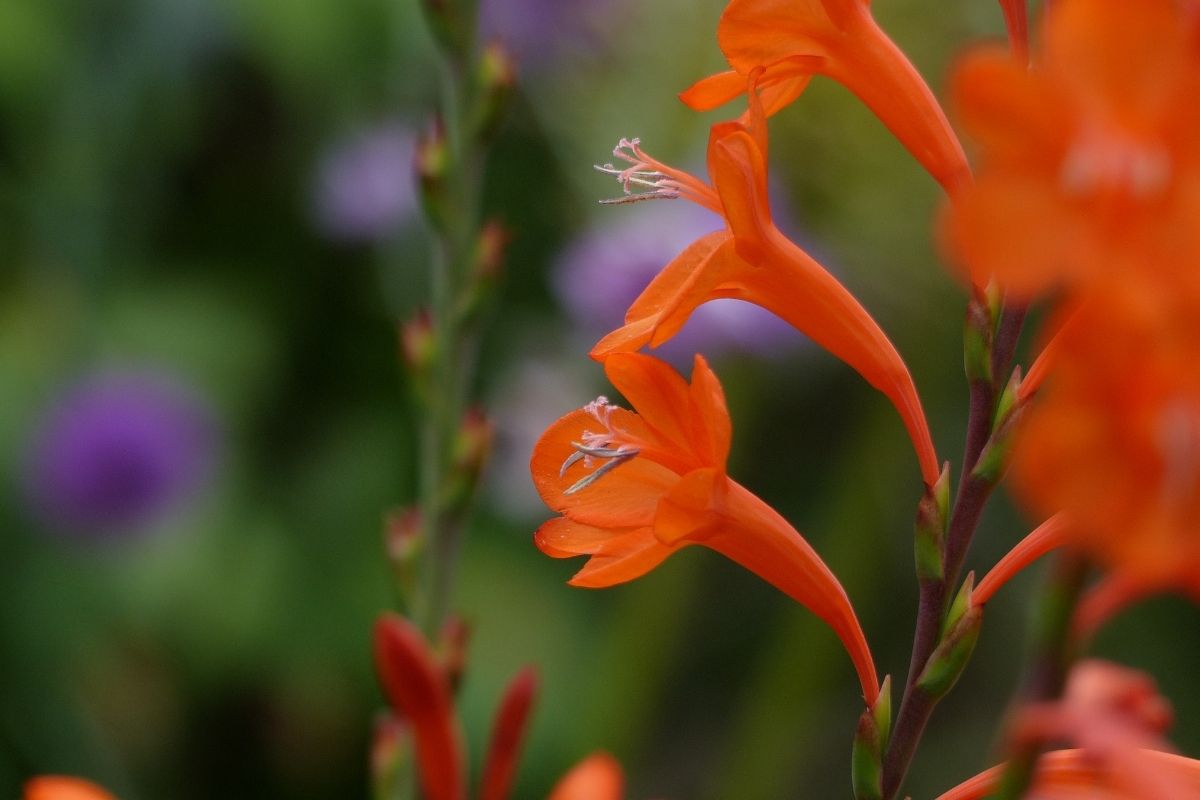
This Watsonia is a good example of a much richer and deeper peach color. The petals of the watsonia are saturated with an almost Sunny D color of peachy orange. WHile the previous cultivar was subtle, this Watsonia goes hard with the peach coloring.
In a bouquet these small flowers can make a lot of noise with the bold and showy color. This could be a perfect partner in crime with the subtle colors of the previous rose cultivar.
It can be a nuanced approach to make the larger flowers like the rose the subtle ones, and keep the showy colors for the small flowers
Alternatively, these Watsonias are a particularly great ‘bush’.
Not a morphological bush, but the Watsonia has a fairly good spread and if planted in a border or bed, or even a planter, the Watsonia will grow large and showy and be the centerpiece of any garden when mature.
This is a great way to bring bold colors and height to a border or bed with this bright summer color.
3. Alcea Rosea ‘Peaches N Dreams’
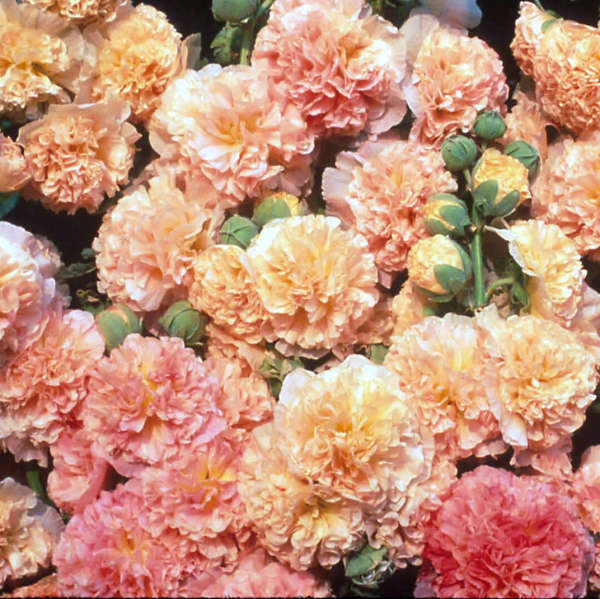
This cultivar remains fairly similar to the aforementioned rose cultivar. However, do consider the Alcea rosea if you would like a different kind of inflorescence than the conventional rose head.
While less hardy than the rose, the Alcea will flower from June through to September if treated well.
If you have a few curious children knocking around your garden, consider the Alcea as it is not thorned like the rose.
This classic cottage plant has a much harsher ‘ruffled’ look than the conventional rose. Imagine twice the ruffling and almost no sight of the inside of the flower – somewhere in between a rose and a hydrangea. A big ball of pinky peachy summer vibes.
While very different plants, the Alcea has almost the same shade of peachy pink that the ‘Peach Blossom’ rose does, so works the same way in bouquets: filling space with subtle colors to create a foundation in which to showcase bolder colors.
4. Weigela ‘All Summer Peach’

For a more long lasting shrub that can bring peach summeriness to your garden every summer, consider the Weigela. Often overlooked for the similar Hydrangea, the Weigla has its own advantages.
Weigela are tough plants that will last for years if mature and well looked after. They will reliably produce flowers from the first hint of spring to the last days of summer.
The funnel shaped, almost bell-like flowers, are prized by gardeners as they will show for nearly seven months when well groomed.
The dark green foliage of pointy leaves brings a great dark contrast to the lightly peach colored, even pink, flowers. They can live happily in a large ornamental pot for a while but can eventually be planted in the ground and grow to around 3-4 feet in spread.
5. Nasturtium ‘Peach Melba’
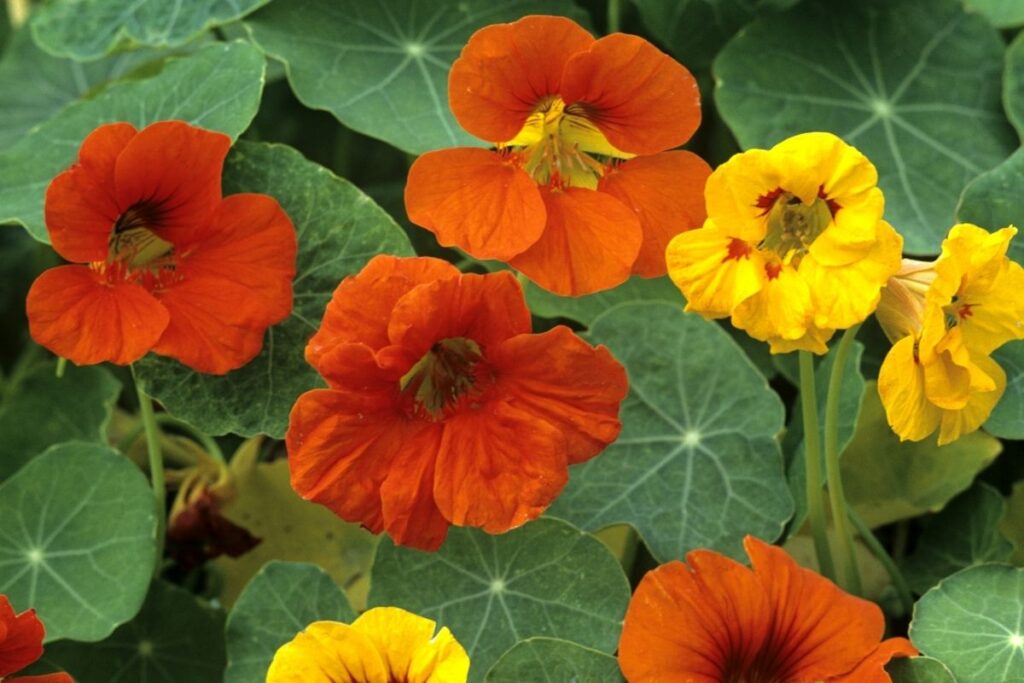
The nasturtium is a showy annual flower that has some choice foliage and some peachy flowers. This cultivar could be the showcase of your annual summer flower bed as it is certain to catch the eye of the passer-by.
This dwarf and single flower variety, when in bloom, will be the highlight of those peak summer months and be something you truly associate with the height of summer.
What’s doubly great about this cultivar is that the beautiful flowers are totally edible and look great for culinary purposes.
The dark green foliage is ovate and quite stunning. The white veins on the dark leaves creates a very elegant and classy contrast that is aesthetically pleasing on its own. In addition, the start of the show is the beautiful quad petalled flower of the nasturtium.
The main color of the petals is an apricot peach color that is light and creamy and shines brightly in the sun. Particularly unique is the dark orange spots that appear near the base of each petal.
In combination these two contrasting shades of orange create a deconstructed peach color that, in combination with the dark foliage, just rings home everytime you see it.
If you can get your hand on these annual flowers, they could really be the showflower of your garden this summer.
6. Viola X Wittrockiana ‘Mystique Peach Shades’

This is a great example of how modern horticultural cultivation methods, such as hybridising and cultivation, can work holistically with landscapers and florists to find the perfect shades of colors and create showstopping flowers.
What is commonly recognised as the conventional ‘garden pansy’ is this hybrid of likely around three different species: Viola tricolor, Viola altacia and Viola lutea. Together, these species create this F1 hybrid that has become common among many gardens.
What is great about this particular cultivar is that it’s shades will change as the season draws on.
They are great to bring some beachy peach color to the late summer and into the early winter if cared for well.
They look great in bouquets, beds, borders, and even harvested for indoor showing. As the shades slowly change you will see how much you will get from this one showy plant.
The Final Word
As you can see, there are many shades of peach out there you can choose from, a color that definitely occurs naturally in nature. Even within natural occurrence, modern cultivation methods have optimised the peach color with genetic involvement from horticulturists.
From the dark and boldly colored Watsonia, to the alternate Alcea with its cottage subtlety – there is a world of peach colored flowers to explore out there, we hope we have shown that exploring the plant kingdom by color is both practical and useful.
What’s more, if you really dig the color peach, you could even consider creating your own peach collared border, or peach colored bouquet.
This can be a great way to welcome the fall by harvesting all your peach colored flowers before they start to crumble under the frosty nights.
Fall, as well as summer, is a great excuse to use peachy colors. This makes peach a very versatile and practical color to grow in your garden as they can epitomise the height of summer while still being able to transition into fall.
In any case, a peach bed or border can be a great way to show off your gardening eye and green thumb. There’s no better way to impress your fellow gardeners than with a well organised and maintained bed, that is themed rather than randomly thrown together.
If you want to make a start at landscaping and test your hand as a flower arranger, organizing your beds by color can be a great way to start playing around with shades and how they match, and is a simple but effective way to practice this skill.
Moreover, exploring cultivars will undoubtedly lead you down some rabbit holes in terms of plant research. We hope you learned about a new flower or found a suitable project for your next season.
Editor’s Recommendations
17 Stunning Yellow Orange Flowers (With Pictures)
Here Is Why Your Peace Lily Flowers Are Turning Brown & How To Fix It Fast!







